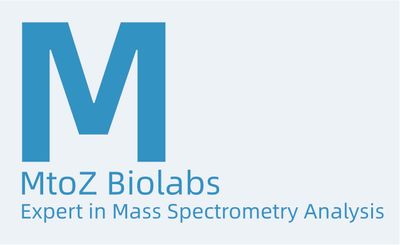

- Home
- Companies
- MtoZ Biolabs
- Articles
- Protein Phosphorylation Detection: ...

Protein Phosphorylation Detection: Methods and Applications
Protein phosphorylation is an important post-translational modification process that involves adding a phosphate group to an amino acid residue in a protein, usually a serine, threonine, or tyrosine residue. Protein phosphorylation plays a key role in regulating various biological processes within the cell, including signal transduction, cell cycle, and metabolism. Therefore, detecting protein phosphorylation levels is of great significance for studying cell functions and disease mechanisms.
Methods
1. Western Blot
This uses phosphorylation-specific antibodies to detect the level of specific phosphorylation sites in protein samples.
2. Mass Spectrometry
This detects phosphorylated peptides in protein samples through mass spectrometry technology, providing precise locations and quantitative information about phosphorylation sites.
3. Immunoprecipitation
This uses phosphorylation-specific antibodies to precipitate phosphorylated proteins, followed by detection through western blot or mass spectrometry analysis.
4. Phosphatase Treatment
This treats protein samples with a phosphatase to determine the phosphorylation state of protein by comparing the phosphorylation levels before and after treatment.
5. Enzyme-Linked Immunosorbent Assay (ELISA)
This uses phosphorylation-specific antibodies to quantitatively analyze phosphorylation levels in protein samples.
Applications
1. Signal Transduction Research
By detecting the phosphorylation level of specific proteins, the intracellular signal transduction pathways can be studied.
2. Disease Mechanism Research
Protein phosphorylation plays crucial roles in many diseases, including cancer, neurodegenerative diseases, and cardiovascular diseases. Studying changes in protein phosphorylation in these diseases can help reveal the molecular mechanisms of these conditions.
3. Drug Development
By screening small-molecule drugs that affect protein phosphorylation levels, potential drug targets and candidate drugs can be discovered.
4. Biomarker Discovery
Changes in phosphorylated proteins may be associated with the onset and progression of diseases, thus they can serve as biomarkers for disease diagnosis or prognosis.
Protein Phosphorylation Detection: Methods and Applications
